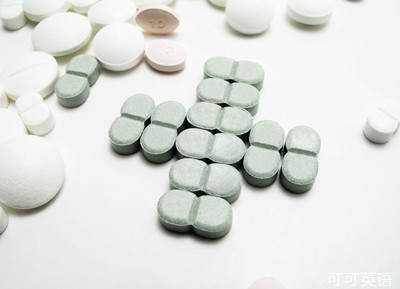Medicinal tablets are nothing new. Doctors have been dispensing pills for thousands of years. And now archaeologists have turned up some of those ancient medicines, which were preserved in a shipwreck for close to two millennia.
藥片并不是新鮮的玩意。醫(yī)生們?yōu)椴∪朔职l(fā)藥丸已經(jīng)有數(shù)千年的歷史了。現(xiàn)在考古學(xué)家找到了一些古時候的藥物,它們被保存在遇難船只里近兩千年了。
The 2nd-century Pozzino wreck was discovered in 1974 off the coast of Italy. It's cargo included medical equipment like a cupping vessel, iron probe, and tin boxes of supplies. And in one of those boxes, researchers recovered five gray tablets. Now, they've analyzed the antique medication. The work is in the Proceedings of the National Academy of Sciences.

1974年,意大利近海發(fā)現(xiàn)了一艘公元二世紀(jì)的 Pozzino 沉船。船上裝有像拔火罐、鐵探針、還有錫盒這樣的醫(yī)療設(shè)備。研究人員在其中一個盒子里找到五顆灰色藥丸。目前,他們正在分析這些古董藥丸。研究結(jié)果發(fā)表在《美國國家科學(xué)院院刊》上。
The pills primarily contained zinc compounds, probably the active medicinal ingredients. But researchers also detected starch, pollen, charcoal, fats and linen fibers. Those fibers helped the tablets hold their round, loaf-like shape, which may be the key to the medication's use: the Greek word meaning “small round loaves” also inspired the word collyrium, or eye-wash. The pills were probably either dissolved in liquid or ground into a powder and used to treat eye conditions. Who knows, maybe Hippocrates used them on his pupils.
這些藥丸主要成分是鋅化合物,這大概是藥物的活性成分。但研究人員也檢測到淀粉、花粉、木炭、脂肪和亞麻纖維。里面的纖維能使藥丸保持圓圓的、類似面包的形狀,這可能是用藥的關(guān)鍵:用來表示“小圓面包”的希臘單詞同時也有洗眼液的含義。使用時可能將其溶于液體,或研磨成粉末,用來治療眼疾。誰知道呢,也許希波克拉底(希臘的名醫(yī))也曾給他的孩子們用過此藥。
原文譯文屬可可原創(chuàng),未經(jīng)允許請勿轉(zhuǎn)載!












